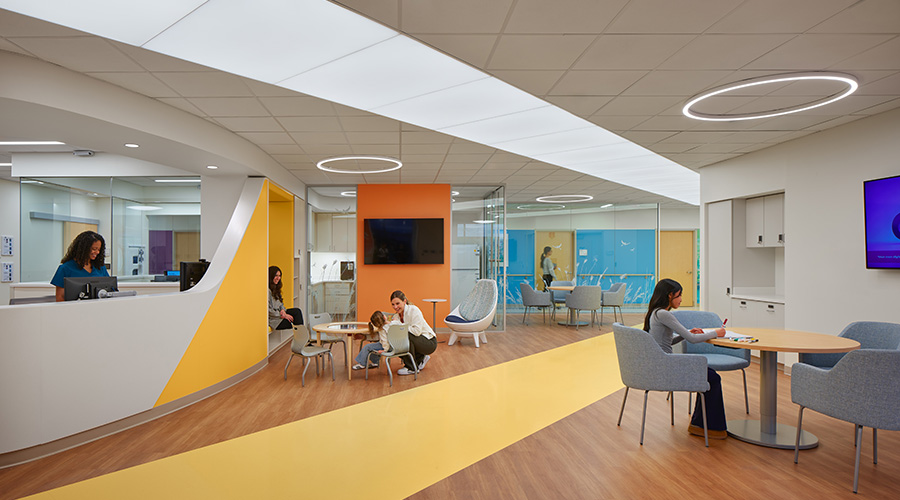In a blog on the Healthcare Design magazine's website, Laura Macklin, a senior healthcare planner for architecture firm NBBJ, talks about balancing privacy and community when designing impatient units for children.
Private patient rooms have become the norm in newly constructed hospitals, largely due to concerns about the spread of infections and patient privacy, Macklin said, but spending long periods of time in a room with potentially limited contact with staff, friends, and family can leave young patients feeling lonely, isolated, and disconnected.
Macklin said she has spoken with parents of children who have weathered long hospital stays and a variety of caregivers, from child life specialists to hospice volunteers, and has found several common themes: Families want a space to sit with and hold their child, storage for personal belongings, privacy to nurture and care for their child without the distractions a shared room can perpetuate, and a place to sleep overnight in the room.
She also points to the need for young patients and their parents to make connections.
"If we can look at the patient unit in the same light and allow strangers the chance to engage, as organically as possible under the stressful situation of being in a hospital, perhaps we can encourage a sense of healing, comfort, and community beyond the patient room," Macklin said.
One solution might be to organize a patient unit that provides multiple neighborhoods or pods, by cohort when possible, where groups of 6-8 patient rooms sit adjacent to spaces where children can eat, play, and gather—essentially creating a "park" for all to engage as a community.
Read the blog.

 Contaminants Under Foot: A Closer Look at Patient Room Floors
Contaminants Under Foot: A Closer Look at Patient Room Floors Power Outages Largely Driven by Extreme Weather Events
Power Outages Largely Driven by Extreme Weather Events Nemours Children's Health Opens New Moseley Foundation Institute Hospital
Nemours Children's Health Opens New Moseley Foundation Institute Hospital Code Compliance Isn't Enough for Healthcare Resilience
Code Compliance Isn't Enough for Healthcare Resilience Ribbon Cutting Marks First Phase Completion for New Montefiore Einstein Facility
Ribbon Cutting Marks First Phase Completion for New Montefiore Einstein Facility